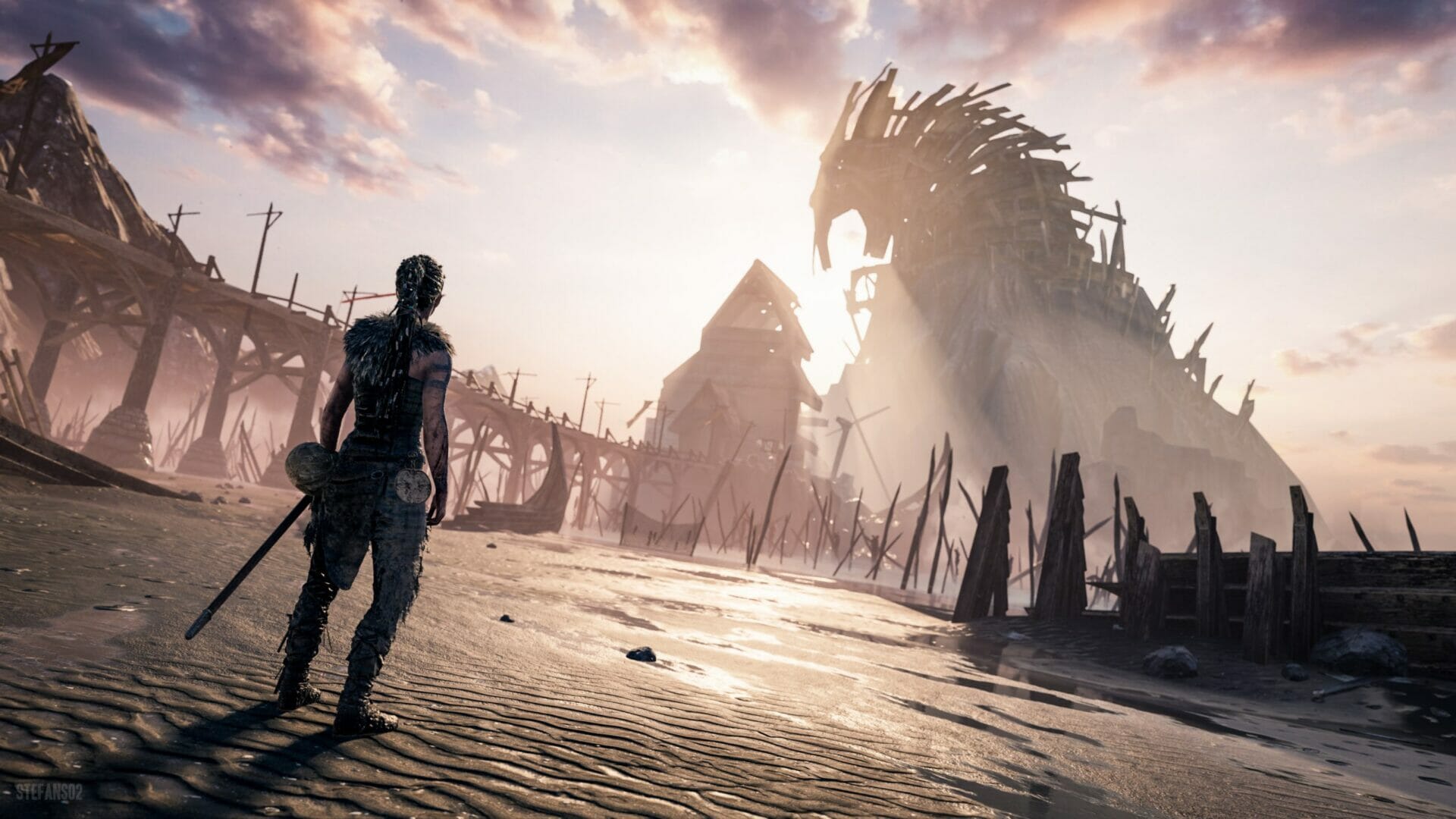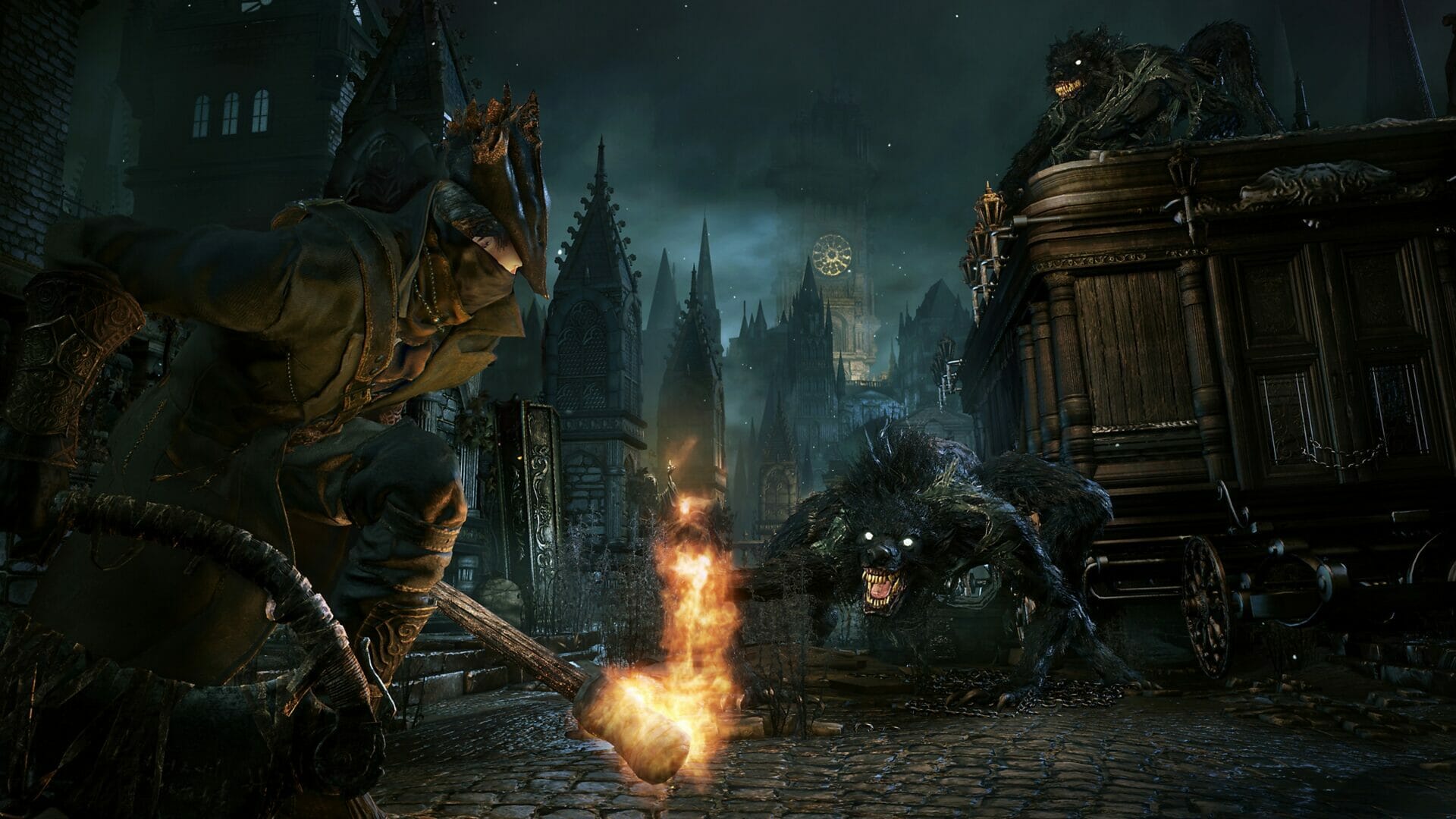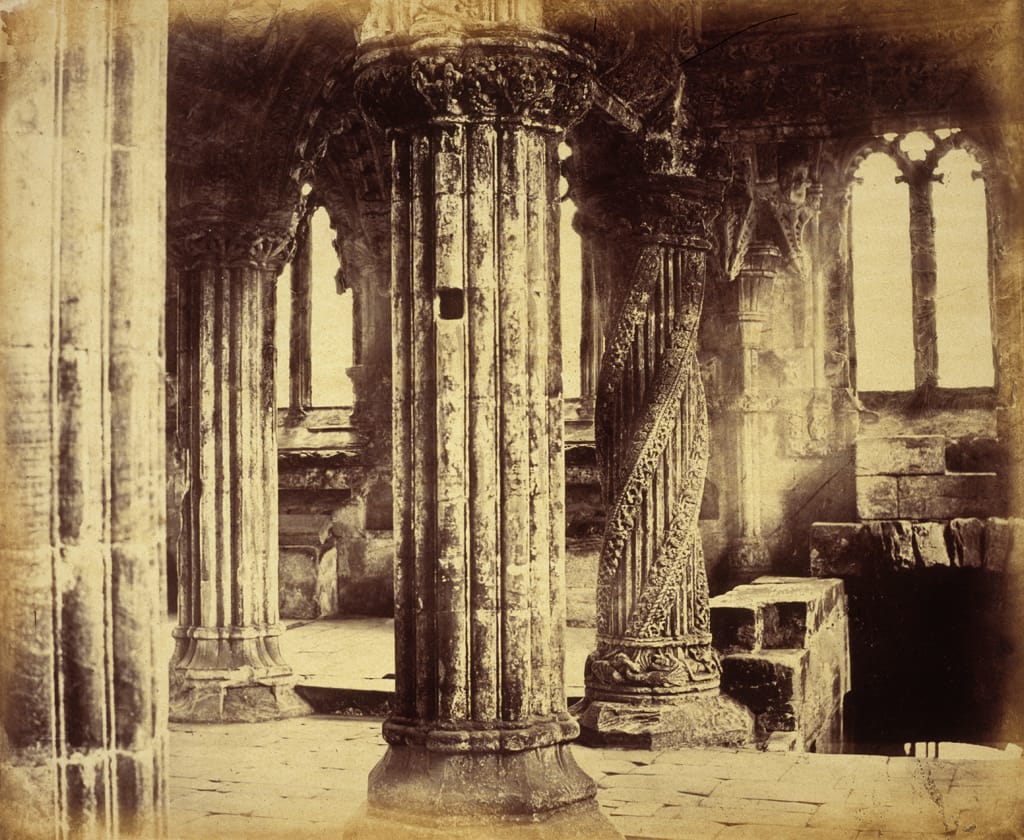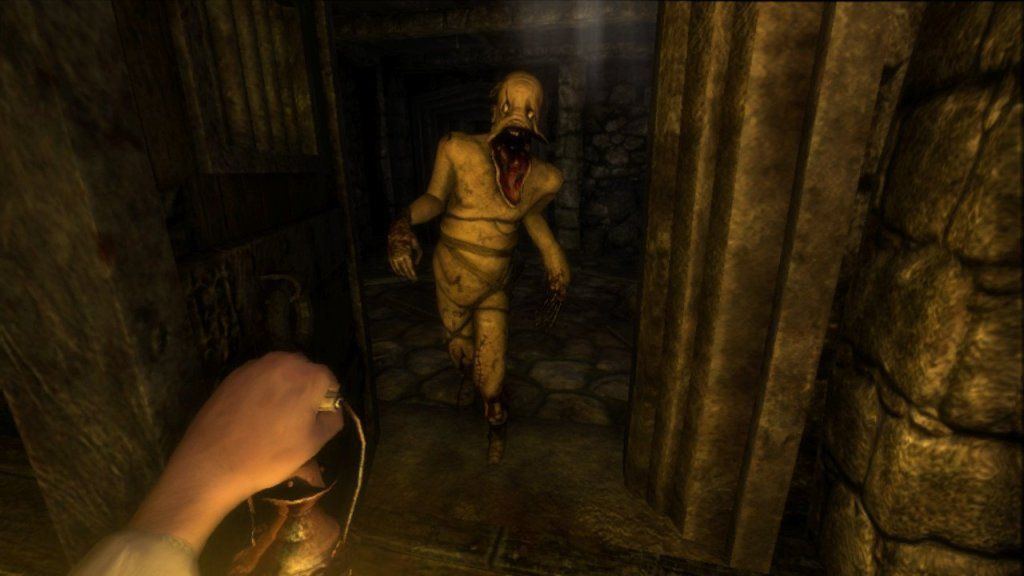
Amnesia: The Dark Descent | A mystery designed to disturb
Studio
Art Director
Lead Composer
Publishing Year
Type of game
Genre
Subgenre
Country
Redeem us both Daniel. Descend into the darkness where Alexander waits and murder him.
Your former self, Daniel
Amnesia: The Dark Descent gained its place as a cult classic by being able to evoke fear in a way that is unrivalled to this day. Yet its creation is as complex as its lore. The development took three years, also due to Frictional Games’ financial issues, and witnessed considerable changes. At first intended to take after their first title Penumbra: Overture, but the final result took a different direction both in terms of gameplay and visuals. With an oppressive atmosphere inspired by the 1986 horror movie The Haunting, it left a lasting mark in its players’ memories. It also marked the beginning of a successful series, the fourth chapter of which – Amnesia: The Bunker – released in 2023.
A tale of redemption and fragmented memories
Upon waking in an unknown manor, Daniel‘s only memories are his name and his home in London’s Mayfair. A long way from where he finds himself now: the isolated Castle Brennenburg, in Prussia. He does not yet know how or why he is there, but a letter written by himself reveals his goal. To kill Baron Alexander, the lord of the castle. Both to amend the unspeakable wrong he sought to forget and to appease the ancient horror he uncovered.
Amnesia‘s beginning sets up a tale whose mystery spurs the player throughout the game, from the early levels set in the castle’s halls down to the finale in the inner sanctum. A quest for answers that calls for instinct, wits, and most of all caution. Because the shadow haunting Daniel’s past is still after him.
Hold onto the light in Amnesia
At its core, Amnesia is first and foremost a puzzle game. Each of its sections features an enigma and items that are exclusive to its solution. And while the base commands are rather limited the physical interaction with objects – introduced with the Penumbra series – allows for a wide range of interactions. From pulling levers to opening doors and breaking down walls, all become relevant to proceed. Similar to INSIDE, the puzzles grow more articulate, but never to the point of interfering with immersion.
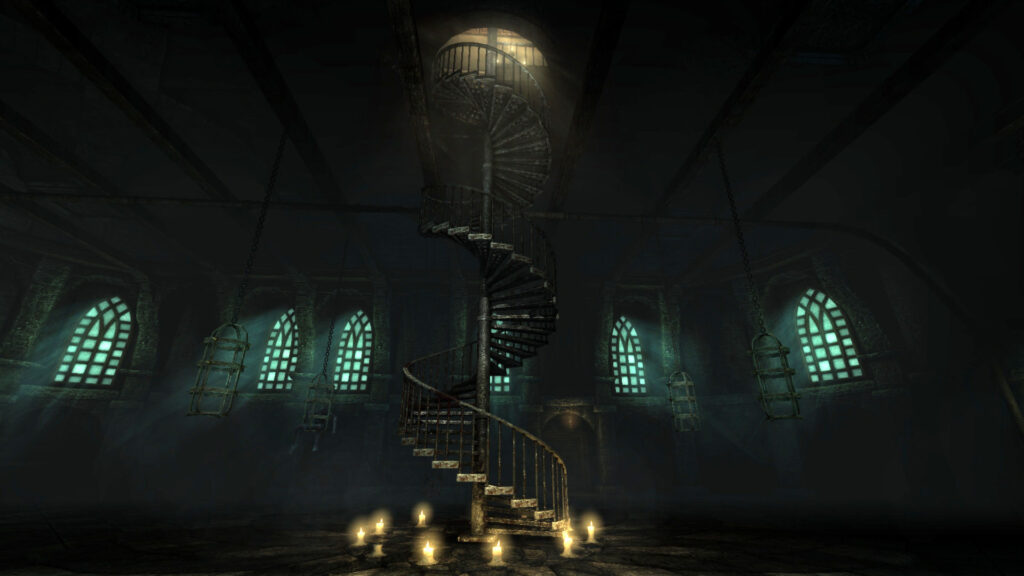
In particular, Amnesia’s gameplay consists of mechanics that both aid and hinder the player. The management of the light is a prime example. At the start, the ambiance is bright, with light filtering into the grand halls through the windows. But as the player ventures deeper into the castle dungeons, the only light source will be candlelight and oil lamps – making it a true descent into the abyss. As such, tinderboxes and oil refills become key objects to look for through the exploration, to avoid falling prey to nyctophobia (extreme fear of the dark).
But to keep the light on also means expending precious fuel and risking being seen. Meaning that the player will be faced with the constant dilemma of choosing dark over light.
No choice but to run and hide
Unlike other survival horror titles such as DeadSpace, Amnesia does not stand out for enemy variety, featuring only two kinds of monsters. The first are the Grunts, sewn-together humanoids with gaping maws who shamble around the castle grounds. The second are the Brutes, grotesque figures with split heads and bladed arms. Both represent the bloody history of that place, and neither will hesitate to tear Daniel apart the moment they spot him.
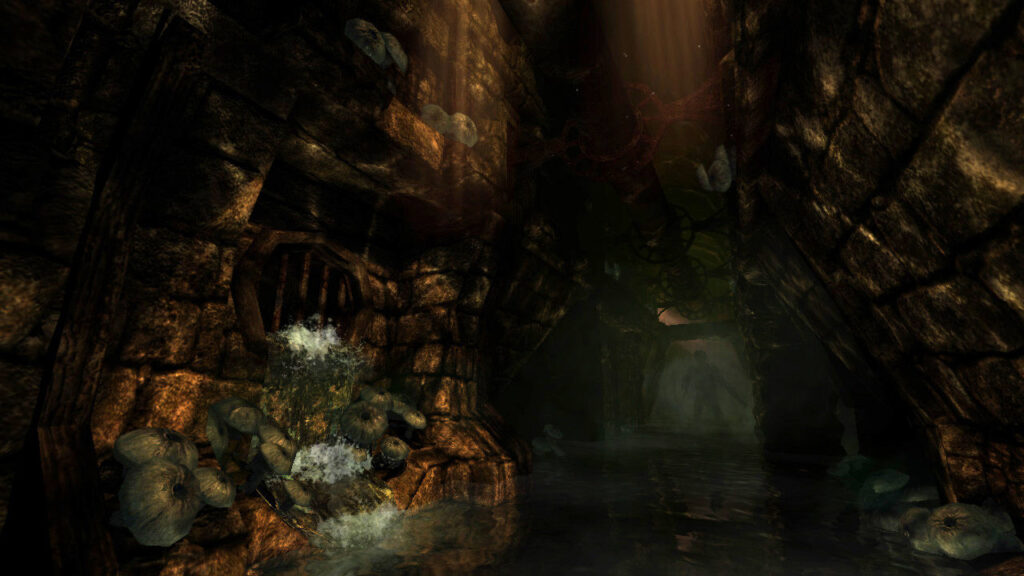
The player soon realizes themself powerless against them, as the game offers no weapons to defend oneself with. Running and hiding are the only chances of survival. This sets it apart from shooter survival horrors like Resident Evil or Bioshock, which all are about fighting back. Instead, it cements the notion that every encounter could be the last and enhances its iconic dread. However, even in hiding the player is not safe. Looking at these monsters is just as deadly, as the mere sight causes bouts of madness. Thus introducing the mechanic of sanity – a tribute to Lovecraft, from whom the game takes direct inspiration.
Amnesia is a building tension that never releases
The sight of horrors so unspeakable that they damage mental sanity is a staple of Lovecraftian horror, and features often in media like Carpenter’s movie In the Mouth of Madness. Frictional Games brought it into Amnesia by having it affect the game itself. From vision going blurry, to hallucinations that distort reality, to sounds of scratches and cries in the dark. But this nightmarish feeling does not stop at the visual aspect, instead it affects the controls as well. If the sanity drops there will be lags, slowed reactions to commands, and insects crawling over the very monitor. Simple yet very effective elements that are seldom overused, and that elevate the gaming experience to a whole new level.
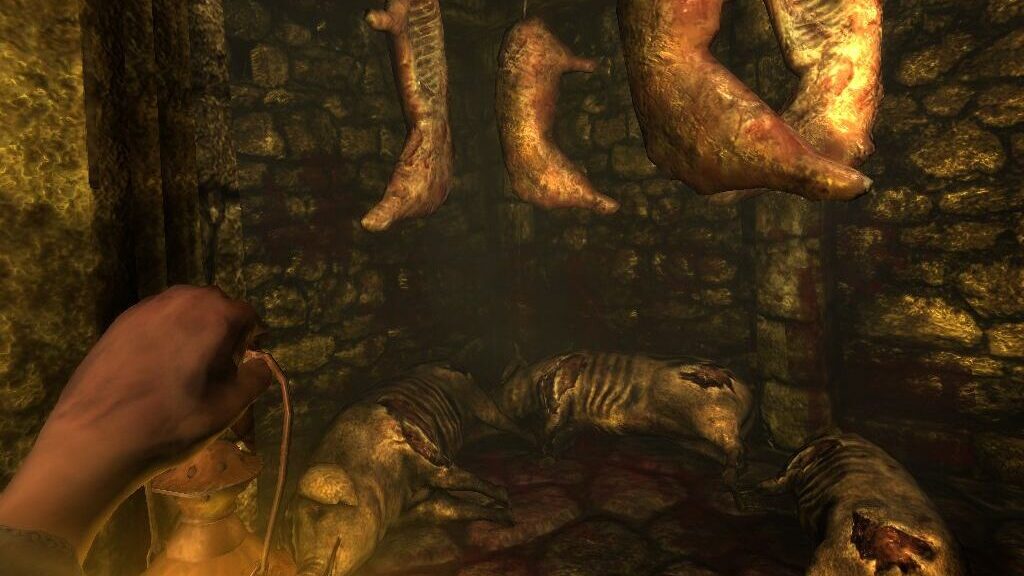
Amnesia became a staple of the genre thanks to its well-crafted atmosphere, which few video games have been able to replicate. It does not rely on jumpscares, focusing instead on building tension from the beginning to the very end. It achieves so by implying a constant unseen danger, lurking behind every corner, which makes the player feel always hunted. But also by removing any element of disruption, thus guaranteeing full immersion. This is the reason behind the lack of displays of ammo, health bars, and similar graphics on the main screen.
Being a title from 2010, not all visuals have aged well. In particular, the gore elements, tend to break the suspension of disbelief and interfere with the atmosphere. However, it is a minor flaw in an overall memorable narrative. A combination of an engaging story, evocative visuals, and effective mechanics makes Amnesia: The Dark Descent an unmatched experience.
Tag
Buy a ☕ for Hypercritic






